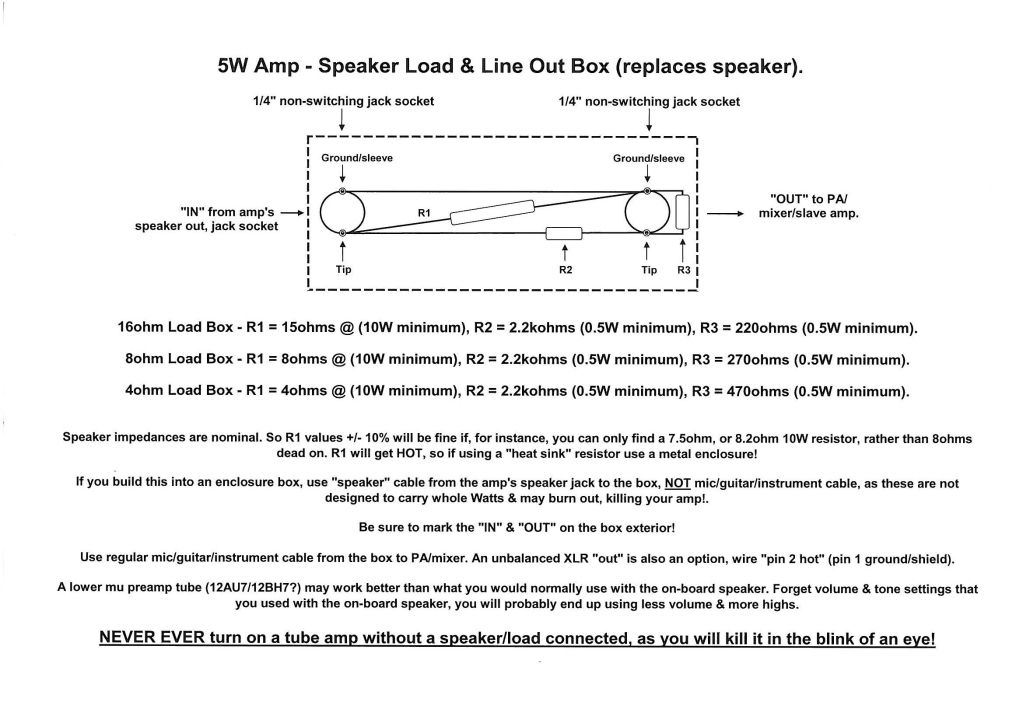Hondo
185 posts
Mar 01, 2013
10:00 AM

|
Which do you think is he better approach? I would like to be able to drive the tubes and get the sound we want and control the volume. I have both the combo and the head and cabinet versions, Thanks.
|
5F6H
1570 posts
Mar 01, 2013
11:37 AM

|
Hi Hondo,
Having the 2 amps you are in a flexible position.
You could either build/buy a 9dB "resistive attenuator" (Google this term, could be made for $30-40 easily - a small enclosure, a couple of jack sockets and 2x10W resistors, could even be hard wired into one of the amps)...
..or make/buy a line out/load box, then feed one amp into the other, it's counter intuative, but this will let you play the amps at a lower volume than using either on their own. I'd fit a lower mu preamp tube to the amp you are lining out (the one you plug your mic into) here's a diagram for the load/line out box:

----------
www.myspace.com/markburness
http://www.facebook.com/markburness
Last Edited by 5F6H on Mar 01, 2013 11:40 AM
|
Hondo
186 posts
Mar 02, 2013
12:03 PM

|
THANKS 5F6H. I remember there being a very good article explaining the function of the EQ pedal comparing it to o-pening a faucet. Maybe someone could just point me to it. I have used the forum search but couldn't find it. Any other opinions welcome.
|
easyreeder
355 posts
Mar 02, 2013
2:13 PM

|
@ 5F6H
Here's an academic question for you: Does that circuit typically result in any audible changes in the way the amp sounds? I'm wondering how much the varying load of a loudspeaker governs the amps behavior as compared to the fixed value of a resistor.
For example, I've seen line-out circuits that are simply voltage dividers (like the second half of your circuit above), but that keep the speaker as the load. I would think there'd be a difference in amp's response, but if so, would it be audible, and what would you expect the effect to be?
|